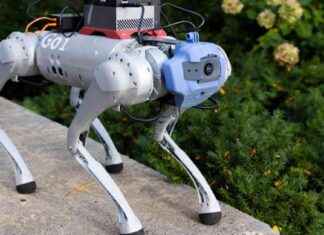The Prosecutor’s Office of Madrid has turned the judgment that absolved the sculptor Gallego Enrique Tenreiro of crimes against freedom of consciousness and acts of profanation to be carried out in October 2018 a graffiti in the tomb of the dictator Francisco Franco at the Basilica of the Valley of the
Fallen.
The representative of the Ministry, who requested a year of prison and compensation to national heritage of the Royal Site of San Lorenzo de El Escorial of 833.41 euros “for the damages caused,” he understands that the behavior deployed by the defendant, ”
As collected in the proven facts and as a result of the test practiced in oral trial, “he is worthy of a criminal reproach.
In his recourse the prosecution explains that the action of drawing the pigeon, along with the text “for freedom” and that said aloud “by the reconciliation of the Spaniards”, can not be understood in freedom of expression.
And this because the facts took place inside the Basilica of the Valley of the Fallen, “which constitutes a place specially reserved for the meeting of those who profess the Catholic religion”.
Is more, it affects the action was carried out in the area of the higher altar and with the preparations under way for the celebration of a Mass, “At a time when the Children of La Escolanía were already accessing the choir and the
Celebrant priests from the Eucharist were directed to the higher altar, “the start of the Mass was delayed.
“It is evident,” the prosecutor dictates, “that the defendant was extremelimited in the way of manifesting himself at vulnerating without any need religious and worship freedom, because he could have deployed his behavior as a protest in any other place that was not the.
of worship “.
In the letter it is also emphasized that in these events the constituent elements of the criminal type consisting of “preventing, interrupting or disturbing; and the commissional mechanism collected in the criminal precept, consisting of the exercise of” violence, tumult, threat or tracks of
done”.
Thus, remember that in the present case there was an interruption by a way of fact because “although the defendant had the right to express something as patch as a reconciliation of the Spaniards and draw a pigeon with the text for freedom, however
It was coming in the Basilica and at the time the Mass was going to begin, which was stopped. ”
At this point, it emphasizes that the Supreme Court itself has considered that “interrupting is nothing other than cutting the continuity of something in the place or in time, which undoubtedly leads to a disturbance.”
Finally, the Prosecutor’s Office revealed that prosecuting conduct reached a “great relevance” due to the fact that the defendant was accompanied by another person to record the facts, “which reached a great media repercussion with the diffusion of the
images”.
In addition, he rules out that the disturbance caused by the defendant was minor, “because the Mass was suspended and until the defendant was not arrested and taken from the Basilica could not be developed normally.”







